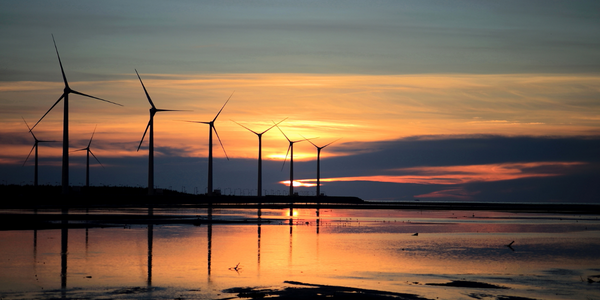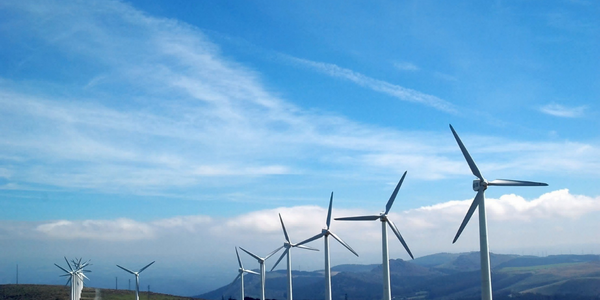技术
- 传感器 - 液体检测传感器
- 传感器 - 电表
适用行业
- 可再生能源
- 公用事业
适用功能
- 采购
- 产品研发
用例
- 智慧城市供水管理
- 泄漏与洪水监测
服务
- 系统集成
关于客户
Hydro International 是一家提供创新、环境可持续产品和服务的全球供应商,这些产品和服务满足不断变化的雨水、合流下水道溢流和废水控制和处理法规。该公司的产品系列为控制数量和改善水质提供了经济的解决方案。他们致力于为客户提供更便宜、高性能的解决方案,以满足合并下水道溢出的要求。
挑战
美国东北部的城市正在探索安装新型组合式下水道溢流 (CSO) 处理装置,采用先进的水力涡流分离器 (HDVS) 和自清洁筛网,例如 Hydro International 生产的装置。传统上,HDVS 被用作高速固液分离器;直到最近,它们作为接触室对 CSO 进行高效消毒的潜在用途才得以实现。使用混合盆对 CSO 进行传统消毒,需要大约 15 分钟的接触时间。然而,一份报告表明,这些系统只需三分钟的接触时间即可提供有效的高效率消毒。虽然更短的联系时间可以为市政当局节省高达 50% 的总体项目成本,但监管机构仍然期望根据旧系统的性能要求看到更长的联系时间。 Hydro International 面临的挑战是了解较短接触时间的基础,并验证高效消毒是较长传统消毒方法的可接受替代方案。
解决方案
Hydro International 与卡迪夫大学合作,使用 ANSYS Fluent 流动建模软件开发 Storm King HDVS 的计算模型。他们通过与全面实验室实验相对应的一系列流速运行模型,并使用结果计算接触时间并将这些值与实验结果进行比较。通过将物理实验与计算程序相结合,Hydro International 成功证明了 Storm King 系统中模拟的停留时间和消毒杀灭率与全面的实验室观察结果一致。他们深入了解了观察到的消毒效果的基础,并证实消毒杀灭率相当于(或在某些情况下优于)传统水箱的杀灭率。这些结果用于支持监管机构放宽 CSO 消毒 15 分钟接触时间规定的提案。
运营影响
数量效益

Case Study missing?
Start adding your own!
Register with your work email and create a new case study profile for your business.
相关案例.

Case Study
Remote Monitoring & Predictive Maintenance App for a Solar Energy System
The maintenance & tracking of various modules was an overhead for the customer due to the huge labor costs involved. Being an advanced solar solutions provider, they wanted to ensure early detection of issues and provide the best-in-class customer experience. Hence they wanted to automate the whole process.

Case Study
Vestas: Turning Climate into Capital with Big Data
Making wind a reliable source of energy depends greatly on the placement of the wind turbines used to produce electricity. Turbulence is a significant factor as it strains turbine components, making them more likely to fail. Vestas wanted to pinpoint the optimal location for wind turbines to maximize power generation and reduce energy costs.

Case Study
IoT Solutions for Smart City | Internet of Things Case Study
There were several challenges faced: It is challenging to build an appliance that can withstand a wide range of voltage fluctuations from as low at 90v to as high as 320v. Since the device would be installed in remote locations, its resilience was of paramount importance. The device would have to deal with poor network coverage and have the ability to store and re-transmit data if networks were not available, which is often the case in rural India. The device could store up to 30 days of data.

Case Study
Automation of the Oguz-Gabala-Baku water pipeline, Azerbaijan
The Oguz-Gabala-Baku water pipeline project dates back to plans from the 1970’s. Baku’s growth was historically driven by the booming oil industry and required the import of drinking water from outside of the city. Before the construction of the pipeline, some 60 percent of the city’s households received water for only a few hours daily. After completion of the project, 75 percent of the two million Baku residents are now served around the clock with potable water, based on World Health Organization (WHO) standards. The 262-kilometer pipeline requires no pumping station, but uses the altitude differences between the Caucasian mountains and the capital to supply 432,000 m³/d to the Ceyranbatan water reservoir. To the people of Baku, the pipeline is “the most important project not only in 2010, but of the last 20 years.”

Case Study
Siemens Wind Power
Wind provides clean, renewable energy. The core concept is simple: wind turbines spin blades to generate power. However, today's systems are anything but simple. Modern wind turbines have blades that sweep a 120 meter circle, cost more than 1 million dollars and generate multiple megawatts of power. Each turbine may include up to 1,000 sensors and actuators – integrating strain gages, bearing monitors and power conditioning technology. The turbine can control blade speed and power generation by altering the blade pitch and power extraction. Controlling the turbine is a sophisticated job requiring many cooperating processors closing high-speed loops and implementing intelligent monitoring and optimization algorithms. But the real challenge is integrating these turbines so that they work together. A wind farm may include hundreds of turbines. They are often installed in difficult-to-access locations at sea. The farm must implement a fundamentally and truly distributed control system. Like all power systems, the goal of the farm is to match generation to load. A farm with hundreds of turbines must optimize that load by balancing the loading and generation across a wide geography. Wind, of course, is dynamic. Almost every picture of a wind farm shows a calm sea and a setting sun. But things get challenging when a storm goes through the wind farm. In a storm, the control system must decide how to take energy out of gusts to generate constant power. It must intelligently balance load across many turbines. And a critical consideration is the loading and potential damage to a half-billion-dollar installed asset. This is no environment for a slow or undependable control system. Reliability and performance are crucial.

Case Study
GPRS Mobile Network for Smart Metering
Around the world, the electricity supply industry is turning to ‘smart’ meters to lower costs, reduce emissions and improve the management of customer supplies. Smart meters collect detailed consumption information and using this feedback consumers can better understand their energy usage which in turn enables them to modify their consumption to save money and help to cut carbon emissions. A smart meter can be defined in many ways, but generally includes an element of two-way communication between the household meter and the utility provider to efficiently collect detailed energy usage data. Some implementations include consumer feedback beyond the energy bill to include online web data, SMS text messages or an information display in consumers’ premises. Providing a cost-effective, reliable communications mechanism is one of the most challenging aspects of a smart meter implementation. In New Zealand, the utilities have embraced smart metering and designed cost effective ways for it to be implemented. The New Zealand government has encouraged such a move to smart metering by ensuring the energy legislation is consistent with the delivery of benefits to the consumer while allowing innovation in this area. On the ground, AMS is a leader in the deployment of smart metering and associated services. Several of New Zealand’s energy retailers were looking for smart metering services for their residential and small business customers which will eventually account for over 500,000 meters when the multi-year national deployment program is concluded. To respond to these requirements, AMS needed to put together a solution that included data communications between each meter and the central data collection point and the solution proposed by Vodafone satisfied that requirement.







